Hosta Plants: 12 Ways to Design a Stunning Shade Garden
Have you ever gazed at that shady corner of your yard with a mixture of frustration and resignation? You’re not alone. For countless gardeners, these shadowy areas represent limitations—spaces where vibrant garden dreams seemingly wither before taking root. That persistent feeling of disappointment lingered in my gardening journey until the remarkable transformation brought about by hosta plants changed everything.
These extraordinary shade-loving hosta plants transformed my problematic areas into the most captivating sections of my landscape. Where once stood barren patches beneath tall trees now thrives a mesmerizing tapestry of textures and colors that sun-worshipping plants simply cannot deliver. The secret? Understanding how to harness the remarkable versatility of hosta plants as foundational elements in shade garden design.
Today, I’m sharing 12 proven approaches to utilize hosta plants for creating your own stunning shade retreat—a peaceful sanctuary that neighbors will stop to admire and photographers might beg to capture. Prepare to view those challenging, shady spots through fresh eyes as potential canvases for your most impressive garden creations yet.
Table of Contents
Table of Contents
Understanding Hosta Plants: The Perfect Shade Garden Foundation




Why Hosta Plants Thrive Where Other Plants Struggle
Before diving into design strategies, grasping why hosta plants excel where most plants struggle provides crucial context for your shade garden’s success. These versatile perennials offer solutions that transform problematic areas into garden highlights.
Hosta plants possess remarkable shade tolerance that sets them apart in the plant kingdom. Native to woodland areas of Asia, particularly Japan, Korea, and China, these perennials evolved specifically to flourish beneath forest canopies. This natural habitat adaptation explains their exceptional performance in home landscapes with similar conditions.
The science behind their shade success lies primarily in their foliage structure. Those broad, often enormous leaves serve as efficient solar panels, capturing and maximizing the limited available light. Unlike sun-demanding plants that require direct exposure, hosta plants employ specialized chloroplast arrangements and leaf surface adaptations that enable effective photosynthesis even in dappled or deep shade.
This evolutionary advantage means hosta plants not only survive but genuinely thrive in locations where sunshine proves scarce. The conditions that challenge most ornamentals—dense tree cover, north-facing exposures, building shadows—create perfect environments for hosta plants to display their full potential.
The Remarkable Diversity of Hosta Plant Varieties
Perhaps most impressive about hosta plants remains their astonishing variety. With over 3,000 registered cultivars, these shade champions offer unprecedented design flexibility through:
- Size variations spanning from tiny miniatures barely reaching 6 inches to massive specimens spreading 6 feet across
- Color palettes including blue-grays, emerald greens, chartreuse yellows, and countless variegated patterns
- Textural elements such as smooth, glossy surfaces, deeply veined patterns, puckered, quilted effects, and wavy, rippled margins
- Growth habits vary from symmetric mounds to vase-shaped forms and cascading arrangements
This incredible diversity means you’ll discover perfect hosta plant varieties for practically any design concept or garden need. The table below highlights the remarkable size spectrum available:
Hosta Plant Size Categories | Height Range | Width Range | Example Varieties |
|---|---|---|---|
Miniature | 3-6 inches | 6-12 inches | ‘Blue Mouse Ears’, ‘Pandora’s Box’ |
Small | 6-12 inches | 12-18 inches | ‘Fire and Ice’, ‘Patriot’ |
Medium | 12-18 inches | 18-24 inches | ‘June’, ‘Guacamole’ |
Large | 18-24 inches | 24-36 inches | ‘Sagae’, ‘Liberty’ |
Giant | 24+ inches | 36+ inches | ‘Empress Wu’, ‘Blue Angel’ |
Armed with this foundation, let’s explore twelve specific approaches to transform your shady spaces using these versatile hosta plants.
Late Spring Shade Garden Tour // Best Hostas // Best Plants For Shade
12 Ways to Design a Stunning Shade Garden with Hosta Plants
1. Create Dramatic Focal Points with Giant Hosta Plants
Nothing commands attention in shade gardens quite like majestic giant hosta plants. These impressive specimens function as living sculptures, establishing dominant focal points that anchor entire garden sections. When positioning these statement plants:
- Select central locations visible from primary viewing areas and garden paths
- Allow ample space (4-5 feet minimum) for full development without crowding
- Consider sight lines to ensure visibility from multiple garden perspectives
- Place specimen plants where their massive forms create natural pauses in the landscape
Outstanding giant varieties include ‘Empress Wu’ (possibly the largest cultivated hosta plant, reaching 4 feet tall with 18-inch leaves), ‘Sum and Substance’ (golden-chartreuse foliage spanning 6+ feet at maturity), and ‘Blue Angel’ (powdery blue leaves creating massive 5-foot clumps).
For maximum impact, surround these giants with complementary plants that enhance rather than compete—think delicate ferns, airy astilbes, or fine-textured sedges that create contrast while allowing the hosta plants to remain the undisputed centerpiece.
2. Design Eye-Catching Color Contrasts
Though shade gardens might seem limited in color potential, hosta plants prove this assumption entirely false. Strategic color combinations create visual excitement even without relying on flowers:
Implement basic color theory principles by positioning hosta plants with contrasting leaf colors adjacent to one another. Blue hostas pop dramatically against gold varieties—try pairing ‘Halcyon’ (intense slate-blue) with ‘Sun Power’ (brilliant gold) for striking results.
Variegated hosta plants act as natural highlighters in dark corners. Varieties like ‘Patriot’ (dark green with crisp white margins) or ‘Rainbow’s End’ (glossy yellow center with dark green edges) create brightness and visual interest in deeply shaded spots.
Consider how light interacts with different hosta plants throughout the day. Morning sun locations benefit from gold varieties that glow when backlit by early rays, while afternoon sun spots often showcase blue hostas better since their waxy coating appears most vibrant in lower light conditions.
3. Layer Different Hosta Plant Sizes for Depth
Professional landscapers regularly employ layering techniques to create garden depth and dimension. Apply this principle with hosta plants by:
Arranging plants with careful front-to-back planning—miniature and small varieties (6-12 inches) at borders and path edges
Creating middle ground interest with medium varieties (12-18 inches) behind smaller specimens
Anchoring backgrounds with large and giant selections (18+ inches) that provide structure and substance
Recommended layering combinations include:
Front: ‘Blue Mouse Ears’ (miniature blue-green mounds)
Middle: ‘June’ (medium blue-green with creamy centers)
Back: ‘Sagae’ (large, upright vase-shaped form with blue-green leaves and cream margins)
As plants mature, maintain distinct layers through judicious division and occasional repositioning of faster-growing varieties. This prevents the green blob effect, where distinctive layers merge into an undifferentiated mass.
4. Incorporate Perfect Companion Plants
While hosta plants create stunning displays alone, thoughtful companion planting elevates shade gardens to extraordinary levels. Select partners that complement rather than compete with your hosta plants’ attributes:
Complementary Foliage Plants:
- Japanese forest grass (Hakonechloa macra) provides graceful movement and fine texture against bold hosta plant leaves
- Heuchera (coral bells) contributes year-round color with burgundy, caramel, or silver foliage that contrasts with hosta greens
- Ferns offer delicate, feathery textures that soften the hosta’s more substantial presence
Flowering Companions:
- Astilbe produces airy flower plumes in shades from white to deep red above ferny foliage
- Bleeding heart displays dangling heart-shaped blooms in spring when hosta plants are just emerging
- Tiarella (foam flower) creates frothy white or pink flower spikes alongside attractive mottled foliage
This companion planting chart provides specific pairing recommendations:
Companion Plant | Benefits | Growing Requirements |
|---|---|---|
Astilbe | Feathery flowers, vertical interest | Moist soil, partial shade |
Bleeding Heart | Spring blooms, arching stems | Well-drained soil, shade |
Ferns | Delicate texture contrast | Consistent moisture, shade |
Heuchera | Year-round color, drought tolerant | Well-drained soil, partial shade |
Japanese Forest Grass | Graceful movement, fine texture | Moist soil, partial shade |
5. Design Garden Pathways Framed by Hosta Plants
Pathways transform gardens from static displays into immersive experiences, inviting exploration and discovery. Hosta plants create exceptional path borders through:
- Consistent, mounding forms that naturally define edges without encroaching on walking spaces
- Textural variety that enhances sensory experiences along garden journeys
- Season-long structure that maintains path definition from spring through fall
Consider these path-adjacent hosta plant recommendations:
- Small, neat varieties like ‘Patriot’ or ‘Blue Mouse Ears’ for formal paths requiring minimal maintenance
- Medium border varieties with distinctive margins, such as ‘Francee’ or ‘White Christmas’, that visually highlight pathway edges
- Fragrant varieties like ‘Guacamole’ or ‘So Sweet’ near the seating area, where their subtle summer scent enhances garden enjoyment
Path materials should complement your hosta plants’ refinement—consider irregular bluestone stepping stones, fine pea gravel, or natural wood chips rather than concrete or brightly colored materials that might detract from plant displays.
6. Incorporate Water Features for Tranquility
Water elements and hosta plants share natural affinities, together creating powerfully tranquil garden spaces. The combination evokes natural woodland streams and forest ponds, delivering both visual and auditory benefits:
Small recirculating fountains positioned among hosta plant groupings create peaceful ambient sounds while reflecting foliage patterns. Consider simple ceramic vessels or natural stone bubbling features rather than elaborate constructions.
Shallow reflecting pools surrounded by moisture-loving hosta plants like ‘Blue Angel’ or ‘Sum and Substance’ double your garden’s visual impact through mirror effects. Even small water features dramatically enhance the overall garden atmosphere.
For naturalistic settings, consider streambed designs with hosta plants positioned along banks where they might naturally occur. Varieties like ‘Undulata’ with wavy, rippled edges echo water movement patterns, strengthening the visual connection.
Moisture-loving hosta plant varieties particularly suited to water feature adjacency include ‘Krossa Regal’ (vase-shaped blue-gray with good standing water tolerance), ‘Rain Forest Sunrise’ (gold center with dark green margin, thrives in high humidity), and ‘Blue Hawaii’ (rippled blue leaves that reference water movement).
7. Use Container Plantings for Flexibility
Container-grown hosta plants provide tremendous design flexibility, bringing these shade champions to patios, entryways, and transitional spaces:
- Select appropriately sized varieties for containers—miniature and small hosta plants naturally excel in pots
- Choose decorative containers that complement leaf colors—cobalt blue glazed pots enhance gold hostas, while terra cotta warms blue varieties
- Consider container materials and insulation properties for your climate zone
Outstanding container varieties include ‘Blue Mouse Ears’ (perfectly proportioned miniature), ‘Fire Island’ (bright gold with red stems), and ‘Pineapple Upside Down Cake’ (yellow center with green margin). For larger containers, try ‘Liberty’ (blue-green with wide yellow margins) or ‘Rainbow’s End’ (glossy yellow center with dark green margin).
Create seasonal arrangements by combining container hosta plants with spring bulbs for early interest, colorful annuals for summer enhancement, and autumn elements like small ornamental grasses for extended seasonal displays.
In colder regions (zones 3-5), consider overwintering strategies such as garage storage, insulated pot wrapping, or transplanting into garden beds during dormancy.
8. Create Texture Gardens with Different Hosta Plant Leaf Patterns
Texture arguably matters more in shade gardens than color, and hosta plants deliver unmatched textural diversity:
Smooth Hosta Plants: Varieties like ‘Halcyon’ and ‘Tokudama Flavocircinalis’ offer glossy, often waxy surfaces that reflect limited light brilliantly.
Corrugated Hosta Plants: Deeply quilted varieties such as ‘Sum and Substance’ and ‘Blue Mammoth’ create dramatic surface dimension through pronounced veining and puckering.
Rippled Hosta Plants: Undulating edges characterize varieties like ‘Praying Hands’ and ‘Wheee!’, creating constant visual movement even without breeze.
Puckered Hosta Plants: Bubbled surface textures distinguish varieties like ‘Abiqua Drinking Gourd’ and ‘Blue Mouse Ears’ with distinctive dimpling between veins.
When designing specifically for texture, position contrasting leaf surfaces adjacent—pair deeply puckered varieties alongside smooth-leafed selections for maximum impact. Consider how sunlight interacts with different surface types: corrugated leaves catch and hold dew and rain dramatically, while glossy varieties reflect available light to brighten dark corners.
For garden photographers, textural hosta plant gardens provide exceptional subject matter. Capture these gardens in early morning when dew highlights surface patterns or during light rainfall when water droplets bead differently on various leaf textures.
9. Design for Seasonal Interest Beyond Summer
While often celebrated for summer foliage, thoughtfully selected hosta plants create garden interest across multiple seasons:
Spring Appeal: Focus on early-emerging varieties like ‘First Frost’ and ‘On Stage’ that push growth when garden interest otherwise remains limited. The unfurling process itself offers compelling visual drama as tightly rolled leaves expand into their mature forms.
Late Summer Interest: Include fragrant-flowered hosta plants such as ‘Guacamole’, ‘So Sweet’, and ‘Fragrant Bouquet’ that produce highly scented white blooms on tall stalks in late summer when many other perennials have finished flowering.
Fall Contributions: Select varieties with good color retention and late-season interest. ‘August Moon’ and ‘Paul’s Glory’ often develop enhanced gold tones as temperatures drop, while ‘Autumn Frost’ maintains vibrant variegation until frost.
Winter Structure: While dormant in winter, larger hosta plant varieties with substantial crowns maintain visible garden architecture under light snow. Consider this skeleton effect when positioning specimen plants visible from indoor viewing areas during winter months.
10. Incorporate Garden Art and Structures
Architectural elements and garden art find perfect partners in hosta plantings:
Garden Ornaments: Position decorative elements where hosta plants provide complementary backgrounds—consider aged stone lanterns, weathered ceramic vessels, or subtle sculpture among blue-toned varieties for Japanese-inspired vignettes.
Structural Features: Integrate small sitting areas, arbors, or trellises as destination points amid hosta gardens. These practical elements establish purpose while encouraging garden exploration.
Sight Lines: Create deliberate views through the strategic positioning of both plants and structures. Frame garden benches with larger hosta plants to establish private seating nooks, or position sculpture where the path curves, revealing them gradually.
When selecting garden art, favor subtle, weathered pieces that complement rather than compete with hosta plants’ natural refinement. Stone, weathered metal, aged wood, and subdued ceramics typically harmonize better than brightly colored or highly reflective materials.
11. Plan for Visual Flow and Movement
Thoughtful hosta plant arrangement creates garden rhythm and movement:
Repetition Techniques: Echo specific varieties at intervals to establish visual patterns throughout the garden. Try repeating distinctive varieties like ‘June’ or ‘Liberty’ every 8-10 feet along winding paths to create an unconscious rhythm.
Curved vs. Straight Designs: Curved planting areas create more natural, flowing aesthetics while straight-edged designs impart formal structure. Match your approach to your overall garden style—curved beds typically feel more relaxed and naturalistic.
Eye Direction: Position hosta plants deliberately to guide visitor attention through the garden. Use distinctive variegated varieties like ‘Patriot’ or ‘Frances Williams’ as visual stepping stones that naturally draw the eye from one garden section to another.
Visual Pauses: Create restful spots amid busier plantings where visitors naturally pause. Simple groupings of identical blue hosta plants like ‘Halcyon’ provide visual calm between more complex mixed plantings.
Professional designers often physically map these movement patterns before planting, using garden hoses or spray paint to outline beds while standing at key viewpoints to ensure the garden reads properly from typical observation positions.
12. Design for Low-Maintenance Beauty
Thoughtful initial planning minimizes future maintenance demands:
Cultural Groupings: Position hosta plants with similar water needs together—keep moisture-loving varieties like ‘Blue Angel’ and ‘Sum and Substance’ in naturally damper areas while grouping more drought-tolerant types like ‘First Frost’ and ‘June’ in drier spots.
Mulching Strategies: Apply 2-3 inches of shredded hardwood mulch, leaf compost, or pine straw around (but not over) hosta plants’ crowns to suppress weeds and retain consistent soil moisture. Refresh annually in early spring before significant growth begins.
Efficient Irrigation: Install drip irrigation or soaker hoses beneath mulch layers for water-efficient delivery directly to root zones. This approach minimizes foliage wetting that might contribute to fungal issues while reducing overall water consumption.
Long-Term Division Planning: When installing hosta plants, consider their mature size and anticipated division schedule. Most varieties benefit from division every 4-6 years, so allowing access space for this future maintenance prevents garden disruption.
Implementation: Bringing Your Hosta Plants’ Shade Garden to Life
Translating inspiration into reality requires proper preparation and techniques:
Site Preparation for Optimal Growth
Successful hosta plant gardens begin with thorough site preparation:
Soil Testing: Before planting, obtain a comprehensive soil test through your local extension service. Hosta plants prefer slightly acidic conditions (pH 6.0-7.0) with moderate organic matter. Amend accordingly with compost, aged manure, or specialized acid-loving plant blends if needed.
Area Preparation: Clear existing vegetation completely, including persistent perennial weeds like creeping Charlie or ground ivy that prove particularly problematic in shade settings. Consider temporary black plastic sheeting for several weeks before planting for enhanced weed suppression.
Tree Root Management: When planting near trees, recognize the competition for water and nutrients. Create larger-than-normal planting holes (24-30 inches wide for medium hosta plants) and incorporate additional organic matter to provide new plants a competitive advantage. Consider installing root barriers for particularly aggressive trees.
Drainage Solutions: Address soggy spots through raised planting areas, French drains, or strategic soil amendments. While hosta plants appreciate consistent moisture, few tolerate truly waterlogged conditions, making drainage improvements essential in problematic areas.
Planting Techniques for Success
Proper planting establishes foundations for long-term success:
Timing Choices: Early spring (just as soil becomes workable) and early fall (at least six weeks before the first expected freeze) provide ideal planting windows. Spring planting gives a full establishment season before winter stress, while fall often offers natural rainfall and cooler temperatures that reduce transplant shock.
Proper Depth: Position hosta plants’ crowns exactly at soil level—neither mounded above nor buried below the surrounding grade. Improper depth increases vulnerability to crown rot (if planted too deeply) or winter damage (if planted too shallowly).
Spacing Considerations: Provide adequate room based on mature size expectations:
- Miniature varieties: 12 inches between plants
- Small varieties: 18 inches between plants
- Medium varieties: 24 inches between plants
- Large varieties: 36 inches between plants
- Giant varieties: 48-60 inches between plants
Initial Care: Water thoroughly after planting (1-2 gallons per plant), then maintain consistent moisture for the first 4-6 weeks while root systems establish. Apply 2-3 inches of mulch around but not touching crowns to moderate soil temperature and retain moisture.
Seasonal Care Calendar
Maintain your hosta plant garden through targeted seasonal care:
Season | Key Tasks | Common Challenges | Pro Tips |
|---|---|---|---|
Spring | Remove winter protection, divide if needed | Late frost damage, slug emergence | Apply organic slug control early |
Summer | Deep watering during dry periods | Heat stress, leaf scorch | Morning watering only, monitor humidity |
Fall | Apply protective mulch after the ground freezes | Fungal issues in wet conditions | Good air circulation prevents disease |
Winter | Apply protective mulch after the ground freezes | Vole damage, crown rot | Avoid covering crowns directly with mulch |
Spring Focus: As soil warms and hosta plants begin emerging (typically when tulips bloom in your area), remove winter protection gradually. Apply preventative slug control before damage occurs—iron phosphate products offer pet-safe, organic options. Divide overlarge clumps just as eyes emerge for minimal shock.
Summer Attention: Provide deep, infrequent watering rather than frequent shallow irrigation. Apply approximately 1 inch weekly when rainfall proves insufficient, preferably through morning application that allows foliage to dry completely before evening (reducing disease risk).
Fall Preparations: After the first light frost triggers dormancy, remove damaged foliage to reduce overwintering pest habitat. Apply a thin compost layer (½-1 inch) around plants to replenish nutrients and beneficial soil organisms. Avoid heavy fertilization, which stimulates late growth vulnerable to winter damage.
Winter Protection: After the ground freezes (typically late November to December, depending on zone), apply protective mulch around but not directly over crowns. Consider physical barriers like hardware cloth cylinders where vole or rodent pressure exists.
Troubleshooting Common Hosta Garden Issues
Even well-planned gardens occasionally encounter challenges:
Pest Management Strategies
Proactive monitoring prevents serious pest damage:
Slug and Snail Control: These represent hosta plants’ primary nemesis, creating unsightly holes throughout leaves. Combat through:
- Copper tape barriers around vulnerable plants or beds
- Diatomaceous earth sprinkled around plants (reapply after rain)
- Evening hand-removal with flashlight (most effective after rainfall)
- Iron phosphate baits like Sluggo are applied proactively before significant damage occurs
Deer and Rabbit Management: These browsers can decimate hosta plantings overnight. Effective deterrents include:
- Regular application of repellent sprays (egg-based products often prove most effective)
- Physical barriers like temporary fencing during vulnerable seasons
- Strategic interplanting with highly aromatic herbs and flowers that deer typically avoid (lavender, catmint, daffodils)
- Motion-activated sprinklers for targeted deterrence
Vole and Rodent Prevention: These pests target underground portions, creating invisible damage until plants collapse. Prevention focuses on:
- Underground barriers (hardware cloth cylinders sunk 8-12 inches deep)
- Gravel mulching near crowns discourages tunneling
- Predator encouragement through raptor perches or outdoor cat access
- Castor oil-based repellents are applied to the soil surrounding valuable specimens
Nematode Identification: Microscopic root-knot nematodes create stunted growth and yellowing. Management requires:
- Affected plant removal and soil replacement
- Resistant variety selection for replanting
- Beneficial nematode introduction to combat destructive species
- Multi-year planting break with non-host species before reintroducing hosta plants
Disease Prevention and Treatment
Maintain plant vigor through proactive disease management:
Fungal Issue Management: Primarily anthracnose, crown rot, and leaf spot. Prevention through:
- Adequate spacing for proper air circulation
- Morning-only watering that allows foliage to dry completely before evening
- Prompt removal of affected leaves to reduce the spread
- Preventative organic fungicide application during humid periods
Virus Identification: Hosta Plants Virus X causes distinctive mottling and distortion without recovery possibility. Management requires:
- Immediate removal and destruction of infected plants
- Thorough tool sterilization between plants during division or cutting
- Purchasing certified virus-free stock from reputable suppliers
- Regular bleach-solution cleaning of garden tools during maintenance
Cultural Practices: Many disease issues stem from improper culture. Reduce vulnerability through:
- Matching varieties to appropriate light conditions
- Avoiding overhead irrigation, which promotes leaf diseases
- Maintaining proper soil nutrition without excessive nitrogen
- Seasonal cleanup that removes potential disease reservoirs
Organic Treatment Options: When intervention becomes necessary, consider:
- Neem oil applications for fungal issues
- Copper-based products for bacterial problems
- Horticultural soap for soft-bodied insect pests
- Beneficial fungal inoculants that enhance natural resistance
Reviving Struggling Hostas
Even established plants occasionally need rejuvenation:
Growth Problem Diagnosis: Determine whether issues stem from cultural conditions, pests, diseases, or natural aging. Look for specific symptoms:
- Declining center growth with robust outer rings indicates a division that needs
- Overall, yellowing suggests nutrient deficiencies or improper pH
- Spotted or streaked patterns might indicate viral presence
- Wilting despite adequate moisture points toward root problems
Division Techniques: Rejuvenate older hosta plants through proper division:
- Spring timing (just as eyes emerge) minimizes shock
- Clean cuts with a sharp, sterilized knife rather than tearing
- Preservation of adequate roots with each division section
- Immediate replanting with a crown at the proper soil level
Transplanting Methods: Relocate unhappy hosta plants successfully through:
- Early spring or fall timing, when stress levels naturally decrease
- Generous root ball preservation extending beyond the drip line
- Thorough pre-soaking of both the plant and the destination site
- Temporary shade provision during the establishment period
Recovery Care: Support stressed hosta plants with:
- Diluted liquid seaweed or fish emulsion fertilizer to stimulate root growth
- Consistent moisture without waterlogging
- Temporary shade enhancement during establishment
- Reduced division size that allows focused energy for recovery
Inspiring Real-World Shade Garden Examples
Visualizing possibilities through successful implementations helps inspire your creation:
Small Space Transformations
Limited areas present unique opportunities for hosta plant-focused design:
Urban Solutions: Even tiny courtyards transform through strategic hosta plant selection:
- Vertical emphasis using containers and wall-mounted planters
- Miniature and small varieties that maintain proper scale
- Reflective surfaces like mirrors or metallic container finishes that enhance limited light
Narrow Side Yards: Those challenging 3-5 foot spaces between homes become showcases through:
- Graduated height planning with the tallest varieties against the walls
- Path integration that encourages passage and viewing
- Limited palette selections that create cohesion rather than chaos
Townhouse Applications: Small frontages gain distinctive character through:
- Formal, symmetrical designs using matched hosta plant pairs
- Container elevations that create multi-level displays
- Seasonal combination with spring bulbs and summer annuals
Before-and-after transformation stories particularly inspire action. Consider documenting your project with photographs taken from identical vantage points to track progress and motivate continued development.
Woodland Garden Masterpieces
Larger landscapes allow comprehensive shade garden development:
Large-Scale Designs: Expansive woodland gardens succeed through:
- Creation of distinct rooms with varied hosta plant selections
- Development of transitions between garden sections
- Incorporation of sitting areas that encourage appreciation
- Balance between open and planted spaces
Tree Integration: Working with existing canopy trees:
- Root competition management through raised planting beds
- Understory layers that mimic natural forest stratification
- Light pattern identification that matches plants to available illumination
Multi-Season Planning: Ensuring year-round interest through:
- Early spring bulb incorporation among emerging hosta plants
- Summer-blooming companion selection
- Fall color elements that extend the season
- Winter structure preservation through selective cleanup
Path Development: Creating exploration opportunities:
- Material selection appropriate to a woodland setting
- Width variation that encourages both passage and pausing
- Destination creation through special plantings or features
- Subtle lighting that extends evening enjoyment
Conclusion: Your Shade Garden Journey
What once represented your garden’s challenging problem area can genuinely become its crowning achievement through thoughtful hosta plant integration. By implementing these twelve design strategies, you’ll create a shade garden offering beauty, tranquility, and four-season interest with remarkably minimal maintenance requirements.
Remember that shade gardens typically evolve more gradually than sun-drenched spaces—patience truly rewards with a lush, cooling retreat that continuously improves as plants mature and your vision develops. Unlike high-maintenance perennial borders requiring constant division and replanting, properly designed hosta plant gardens often remain stunning for 5-7 years before significant renovation becomes necessary.
Your hosta plants’ journey marks just the beginning, with each season bringing new discoveries and delights as plants mature and your design vision materializes. Document this transformation through photographs and garden journals to fully appreciate the remarkable transition from problematic space to garden showcase.
Frequently Asked Questions About Hosta Plants in Shade Gardens
What plants grow well with hosta plants in shade gardens?
Astilbe, bleeding heart, ferns, heuchera (coral bells), Japanese forest grass, tiarella (foam flower), and brunnera all make excellent companions for hosta plants in shade gardens. These plants complement hostas with contrasting textures, seasonal blooms, and similar growing requirements. For the earliest spring interest, consider incorporating bulbs like snowdrops, crocus, and species tulips that bloom before hosta plants emerge and disappear as hostas expand.
How do you arrange hosta plants in a garden for the best visual impact?
Arrange hosta plants with larger varieties toward the back or center of beds, medium-sized hostas in the middle ground, and smaller varieties at the front edges. Create visual interest by contrasting leaf colors (blue against gold, variegated against solid) and varying leaf textures throughout the garden. Grouping identical hosta plant varieties in odd numbers (3, 5, 7) creates more natural-looking plantings than evenly spaced specimens or pairs.
When is the best time to plant hosta plants?
Early spring or early fall represents ideal times to plant hosta plants. Spring planting provides a full season to establish before winter, while fall planting often benefits from natural rainfall and cooler temperatures that reduce transplant stress. Avoid planting during summer heat when possible, but if necessary, provide temporary shade and consistent moisture for newly installed summer plantings until established.
How much space do hosta plants need when planting?
Hosta plants need spacing based on their mature size: miniature varieties need 12 inches between plants, small varieties 18 inches, medium varieties 24 inches, large varieties 36 inches, and giant varieties 48-60 inches between plants. Proper spacing prevents overcrowding and reduces disease pressure. Remember that most hosta plants reach full size by their third or fourth growing season, so initial spacing should accommodate mature dimensions rather than first-year size.
What are the best hosta plants for small gardens or containers?
The best hosta plants for small gardens include ‘Blue Mouse Ears’, ‘Pandora’s Box’, ‘Mighty Mouse’, ‘Mini Skirt’, and ‘Twist of Lime’. These compact varieties maintain their proportional beauty without overtaking limited space and perform well in containers. When container planting, select pots at least twice the root ball width with excellent drainage holes to prevent root rot issues common in confined growing conditions.
How do I protect my hosta plants from slugs and deer?
Protect hosta plants from slugs using copper tape barriers, diatomaceous earth, coffee grounds, or organic slug baits. For deer protection, apply repellent sprays regularly, install physical barriers like fencing, or interplant with deer-resistant aromatics like lavender and catmint. Consistency proves crucial with both pests—intermittent protection often fails as animals quickly return once deterrents diminish. Consider combining multiple approaches simultaneously for enhanced effectiveness.
Ready to Transform Your Shade Garden? Take the First Step Today!
Don’t allow another season to pass with that shady spot remaining underutilized. Whether starting from scratch or enhancing existing garden areas, hosta plants provide the perfect foundation for a remarkable shade garden transformation. Visit local garden centers to explore available varieties, or investigate specialty hosta nurseries online for rare and unusual specimens.
Begin by measuring your available space, assessing light conditions throughout the day, and selecting just one area to begin your hosta plants journey. Remember that successful gardens often develop incrementally rather than through overwhelming complete transformations.
Share your shade garden progress with fellow enthusiasts by tagging #HostaHaven on social media platforms. We regularly feature reader gardens and provide customized design suggestions for specific challenges. Subscribe to our monthly shade gardening newsletter for seasonal tips, variety spotlights, and exclusive design advice tailored specifically to your growing zone.
Transform that challenging shade area into your garden’s highlight—your future self will thank you for starting today!
Join our shade gardening community by entering your email below for monthly expert advice, plant recommendations, and exclusive subscriber benefits tailored to your specific growing region.

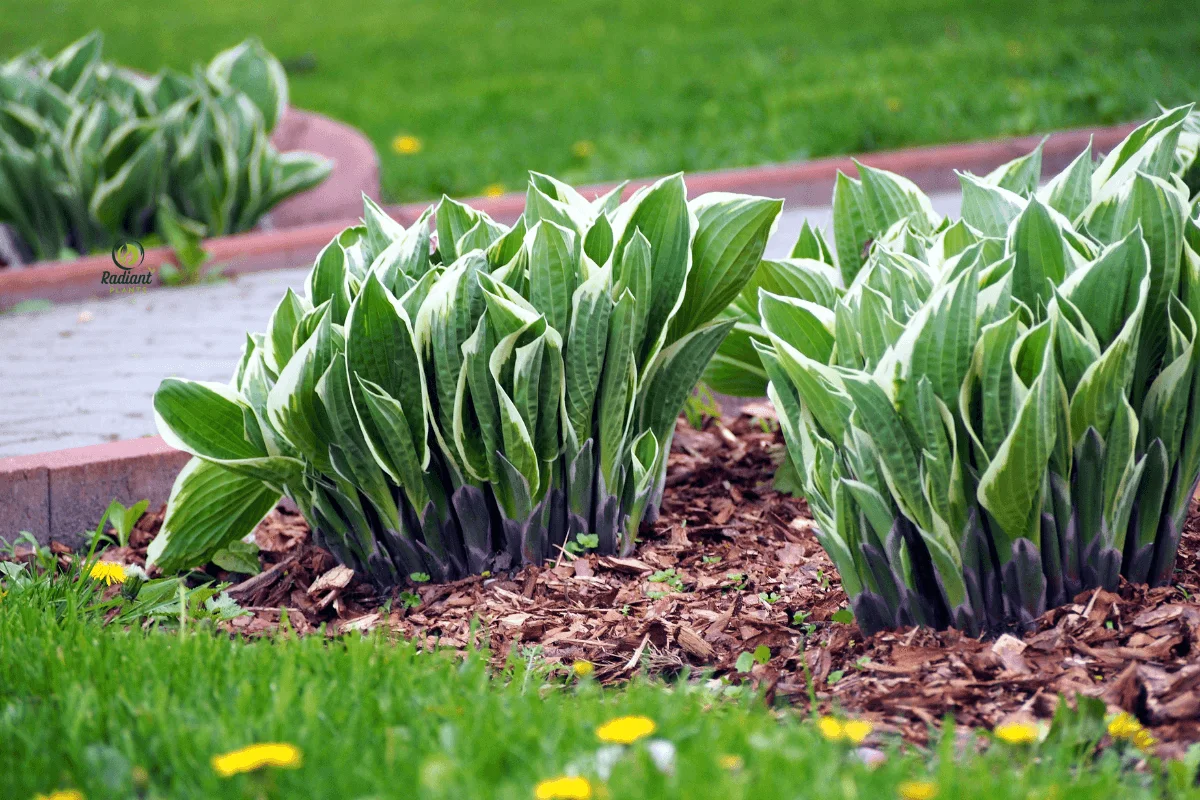
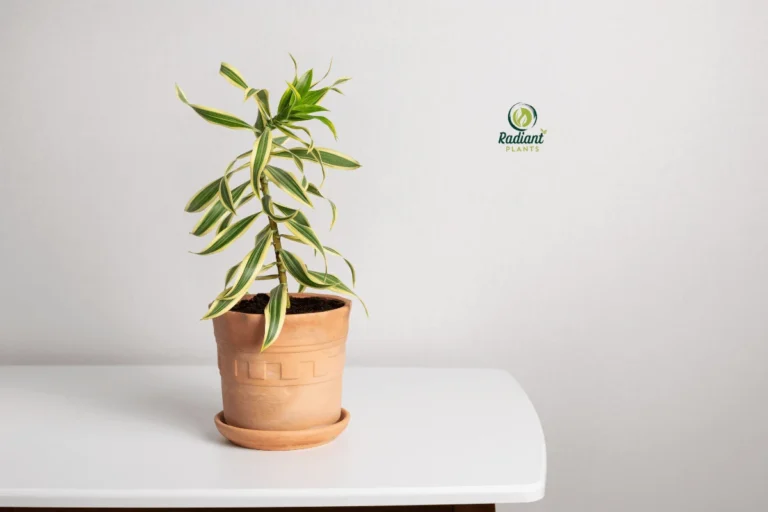
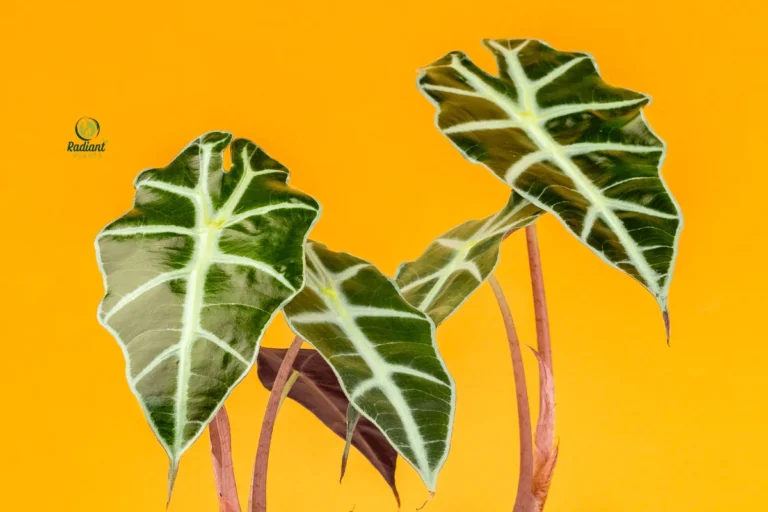
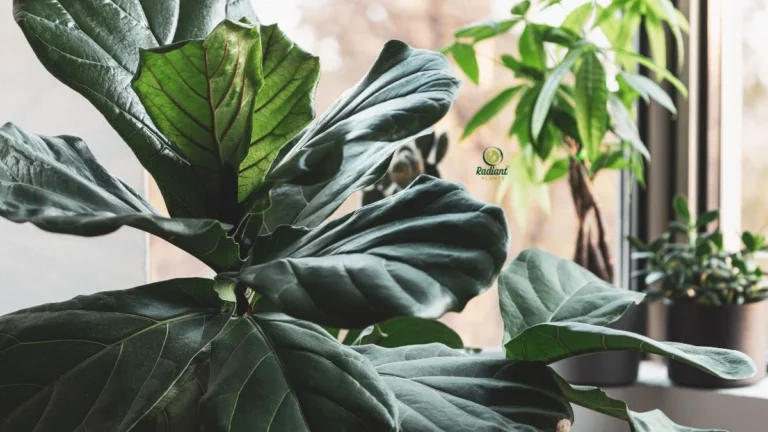
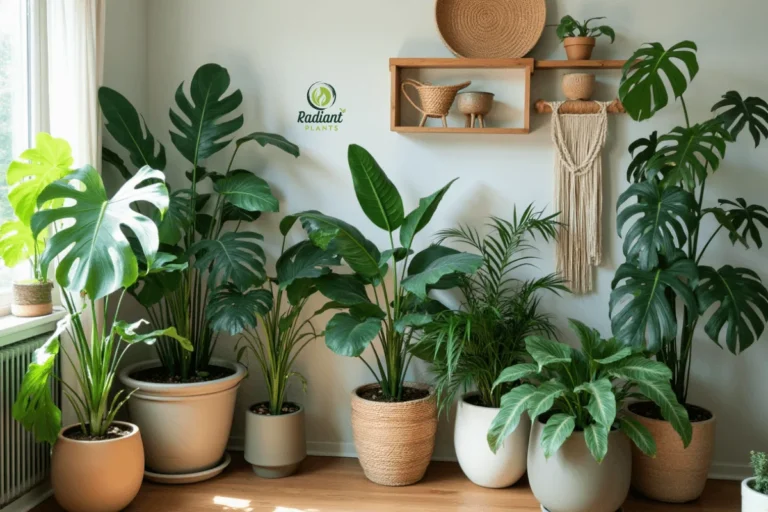
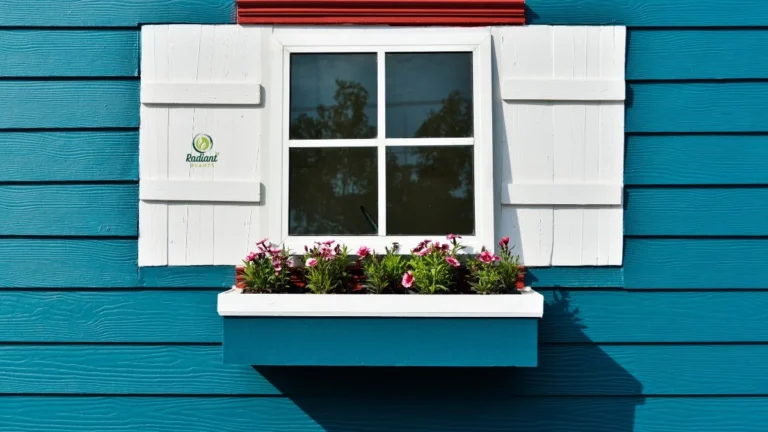
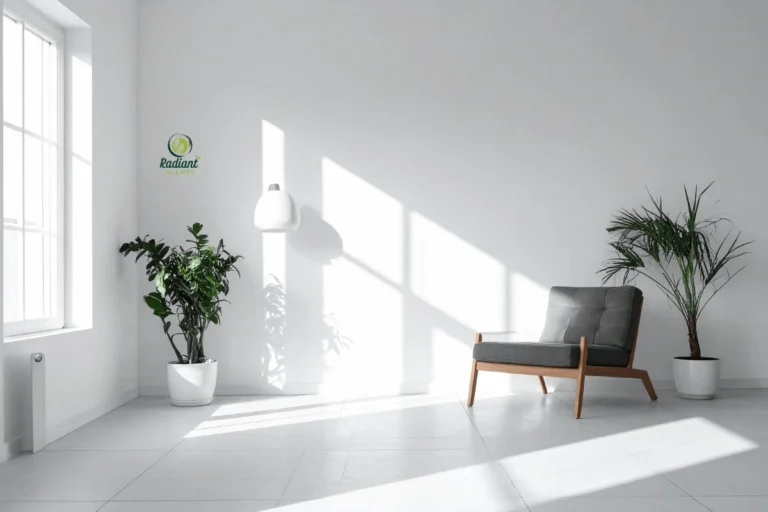
Thank you for your sharing. I am worried that I lack creative ideas. It is your article that makes me full of hope. Thank you. But, I have a question, can you help me?
I don’t think the title of your article matches the content lol. Just kidding, mainly because I had some doubts after reading the article.